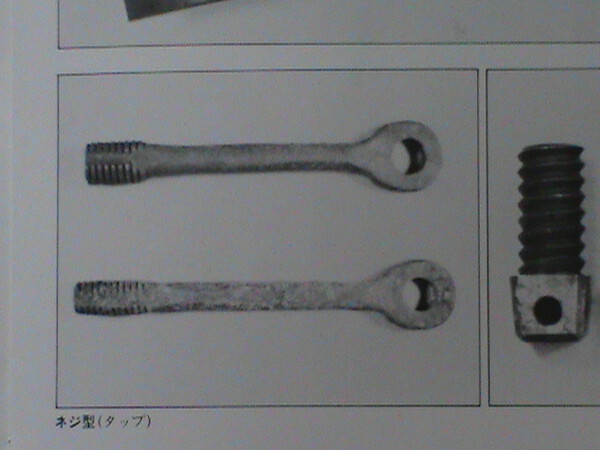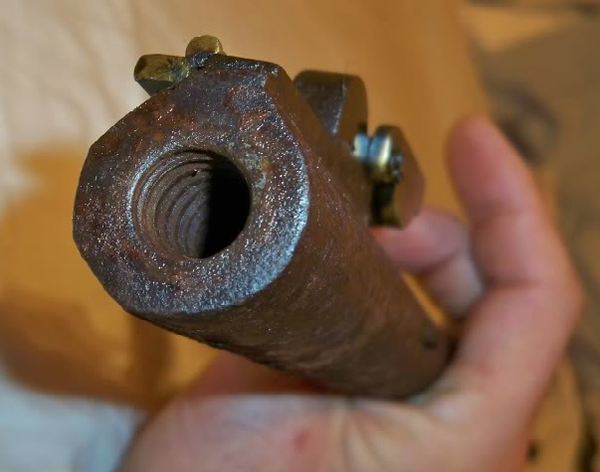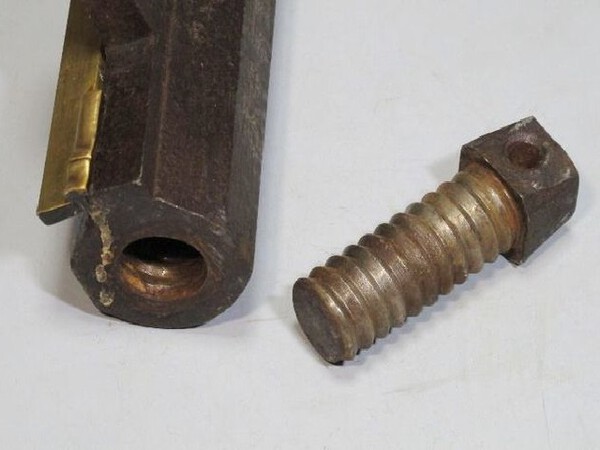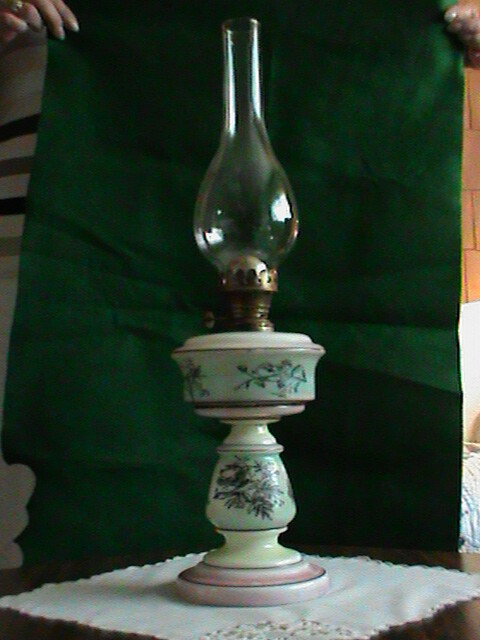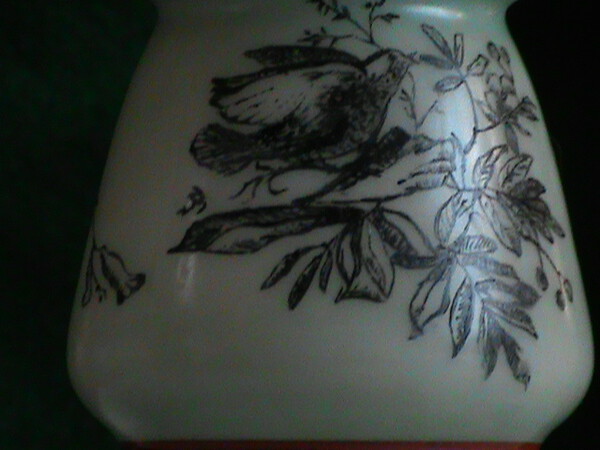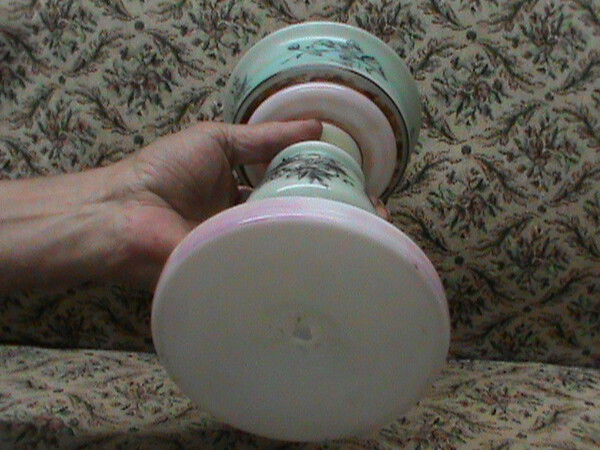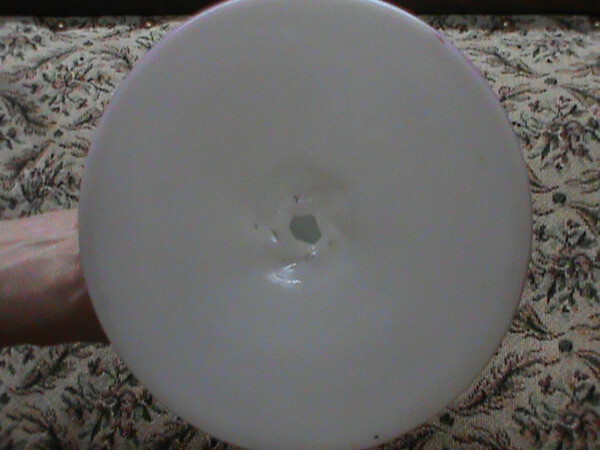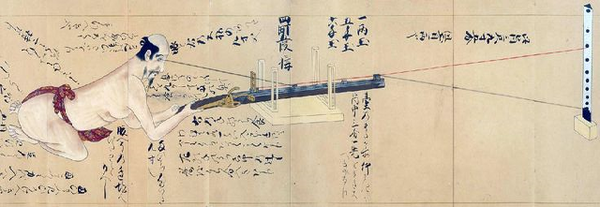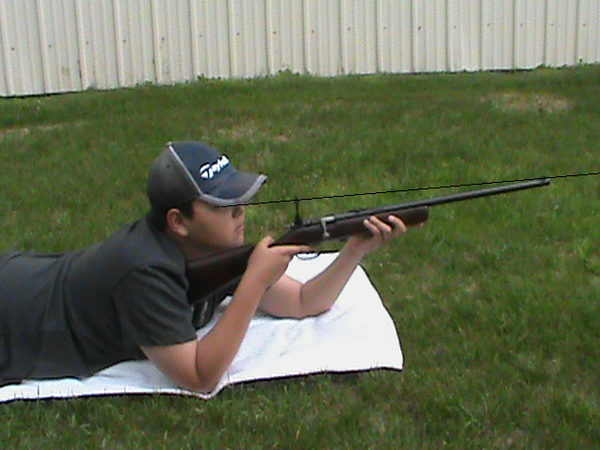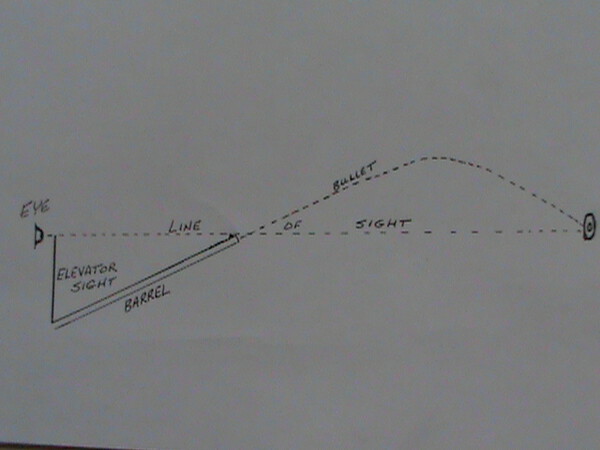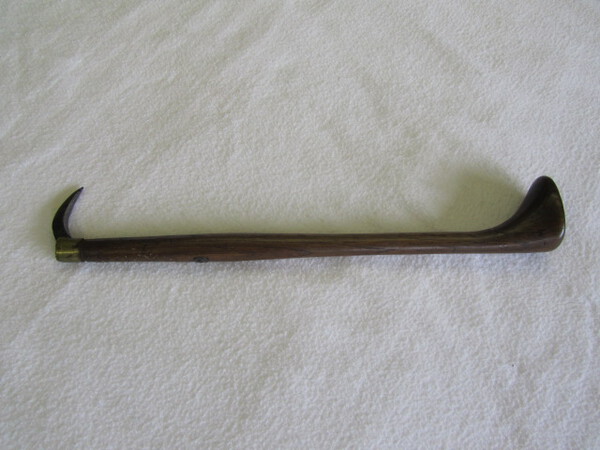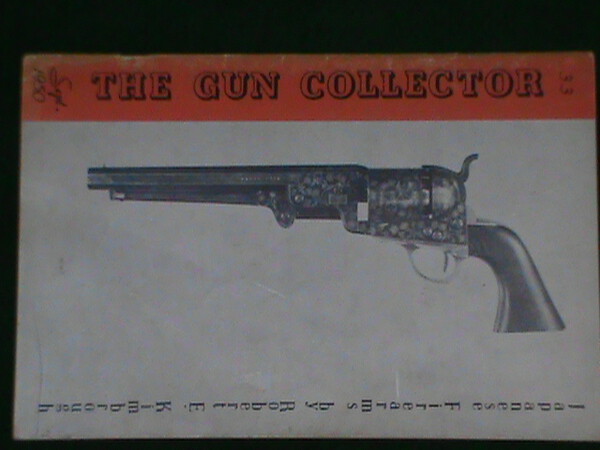-
Posts
1,397 -
Joined
-
Last visited
-
Days Won
4
Content Type
Profiles
Forums
Events
Store
Downloads
Gallery
Everything posted by watsonmil
-

THE TANEGASHIMA BREACH PLUG ( BISEN )
watsonmil replied to watsonmil's topic in Tanegashima / Teppo / Hinawajū
Dear John, " On an antique that will never be fired again it is at what point do you weigh damage against preservation? In these cases I would err towards the preservation side. " ............. SO WOULD I JOHN, ... SO WOULD I ! ... Ron Watson -

THE TANEGASHIMA BREACH PLUG ( BISEN )
watsonmil replied to watsonmil's topic in Tanegashima / Teppo / Hinawajū
Dear Dany C. Weird, ... not necessarily. When one gets stuck for solutions to a problem, ... it is often the weird that succeeds. The main thing is much like the first rule a Doctor should learn ( but often don't ) ... do not make the patient worse. Your idea will surely not make the patient worse, ... and is worth a try. Often when doing restorations ... it is of utmost importance to go slow and always if possible use the original type hand tools and techniques of the time period the item was made. Patience is a virtue soon learned ( often too late ) when doing restoration or repairs on antiques. ... Ron Watson -

THE TANEGASHIMA BREACH PLUG ( BISEN )
watsonmil replied to watsonmil's topic in Tanegashima / Teppo / Hinawajū
Dear Piers, " Incidentally someone told me the other day that the first guns made in Tanegashima probably had solid, sealed breech plugs. " Yes, ... see my article above ... " sweated " into place as in early Portuguese matchlocks. Once something is " sweated " into place it is solid and generally cannot be removed as heating the breach afterwards also heats the breach plug which had to be cold to insert in the beginning. To answer Dany C. , ... heating the breach plug would defeat the purpose as that would cause the breach plug to expand even tighter, ... what it might do is upon cooling and contracting it might break the bond between breach and breach plug. I've often done this with stuck bolts on machinery, adding a little fine oil around the area of the threads as I'm heating with some success I might add. ... Ron Watson -

THE TANEGASHIMA BREACH PLUG ( BISEN )
watsonmil replied to watsonmil's topic in Tanegashima / Teppo / Hinawajū
Dear Eric, I mechanically translated the Essay from the National Rifle Association of Japan, ... and although difficult to understand one or two paragraphs stand out ... here is one of them from page 3 : " It is characteristic of the steel structure of crystals (magnification 42) locations along the thread profile, it flows continuously. By inserting the male screw "type torsion" it after heating the breech and 鍛打 outside of the barrel, which indicates that it was formed a female screw gun cavity wall surface. And serves as a critical evidence that was created during hot forging. Those further expand the (magnification 100) of the internal thread piles, f is illustrates the crystalline structure of steel by hot forging is as described above. " " .... Conclusion " " The screw of hot forging has been made over the Edo period to the late Edo period, Western thought never came in was proved. " I get the gist of what the writer is trying to convey, ... that my theory may probably be correct that indeed rather than the female threads being cut by die, ... they were actually formed by HOT FORGING. This seems to be the first Japanese scientific research into how the female threads were produced. ... Ron Watson -

THE TANEGASHIMA BREACH PLUG ( BISEN )
watsonmil replied to watsonmil's topic in Tanegashima / Teppo / Hinawajū
Dear Brian, Removing the bisen is not all that important. The barrel can be adequately cleaned inside without its removal. It is simpler but one often finds getting the bisen properly lined up when re-installing it can be frustrating to say the least. You are probably never going to fire it anyway, and if you do at least you know the breach plug is secure :D . Wrapping emery paper around a brass rod and then using your electric drill will remove any stubborn rust from inside the barrel. Follow up with crocus cloth to give the inside a nice clean polished finish and voila you're ready for hunting Lion, or Elephant Poachers . ... Ron Watson PS. Got your ama-ooi completed yet ?? -
The Matchlock entered Japan aboard a small Chinese cargo ship in 1543. The ship landed on Tanegashima Island and by chance on board were 3 Portuguese, ... two of whom carried Matchlock muskets. These were the very first Europeans to land upon the shores of Japan. To make a long story short, The lord of the island, Tokitaka, purchased two of the matchlocks which were sold “for a great profit” and tasked his sword maker with producing copies. Japanese swordsmiths were expert blacksmiths/swordsmiths, but the blacksmith/swordsmith had difficulty in forging the barrel so that the breach plug screw on the end could be fitted or so the story goes. The screw could supposedly be removed to allow the barrel to be easily cleaned. The truth of the matter is that contrary to popular belief the breach plugs on the Portuguese Matchlocks were in all probability not threaded at all but rather sweated into place. This was done by heating the breach end of the barrel and then inserting what had previous to the barrel being heated ( the heating causing the barrel opening to expand ) a slightly larger diameter plug of steel. When the barrel cools the plug ( breach plug ) is now impossible to remove the fit is so tight. Supposedly a year later, a Portuguese blacksmith arrived in Japan ,and he was persuaded to pass the secret of the breach plug by as legend goes ... the Portuguese blacksmith was offered the hand in marriage of a lovely girl called “Wakasa” ( the blacksmith's daughter ) as the reward for disclosing the secret of how to affix the breach plug into the barrel. This is in all probability just legend. Now whether or not the Portuguese had moved from the sweated in breach plug to a screw type system is questionable ( in spite of the Japanese claiming to still own one of these original Portuguese Matchlocks ). Personally I believe this is just wishful thinking that any Portuguese Matchlock survived. The matchlock in question is missing its lock I believe. I searched but I cannot find a photograph of this or some say two guns. Perhaps Piers has a photograph ? Since the breach plug or Bisen is on any Japanese matchlock that I have seen have been of a threaded variety ( male thread ) and affixes to the breach by threading into the barrel ( female thread ) and quite often such a poor fit that a small flat piece of lead is added to the threads on the bisen so as to get a tight fit to the female threads of the breach .... HOW did the Japanese thread these barrels ? It is one thing to hand file threads on the bisen, ... difficult, ... but not impossible, ... but it is bloody impossible even for a Japanese craftsman to file the female threads inside the breach of the barrel. It cannot be done ! Well you might say, ... I've seen pictures of a Japanese TAP for cutting these threads ( perhaps Taira Sawada or some other Japanese expert has explained how it was done ) but since I do not read Japanese I cannot be sure. ( SEE PHOTOGRAPH of what appears to be a Japanese TAP). Since the Japanese did not possess to the best of my knowledge TAP & DIE sets back in the late 1500's nor the early 1600's for that matter .... we see virtually no screws being made. With but very few exceptions the Japanese used tapered brass pegs to attach locks to their firearms. So how did they cut the female threads inside the breaches of their matchlocks ? Perhaps the Japanese Scholars have already explained the process, ... but if they have, ... they to the best of my knowledge never published the answer in English. Here then is my theory ( if stolen I assure you quite by accident due to my not reading Japanese ). The item that appears to be a TAP was inserted cold and probably coated with clay into a pre heated ( red hot ) barrel ... a tight fit. The breach was then hammered all around driving the barrel steel into the groves of the FALSE TAP. The tap was then removed by unscrewing and the process repeated by screwing the cold false tap into the poorly executed female threads. The barrel was repeatedly hammered until a decent fit was achieved and the FALSE TAP removed permanently. A BISEN was then filed by hand to match the threads on the FALSE TAP ... a tedious but possible task. This explains the rather poor fit of many bisen and the reason a small thin sheet of lead was wrapped around the bisen to ensure a nice tight fit on many bisen I have examined. I have attached several photos , showing the different methods of attaching the breach plug or bisen, a FALSE TAP, a Treaded Breach, and a Bisen. As always any errors or omissions are mine alone. ... Ron Watson
-
A hearty welcome to DanC, ... actually Danny Carruthers is my cousin's son. Danny has shown a serious interest in Nihonto and the Tanegashima as well as Japanese Art work in general. I hope you find many hours of enjoyment here on the NMB. There are some wonderfully knowledgeable people here and you need not be afraid to pick their brains. ... Ron Watson
-
Dear Members, Around the fourth century A.D., glass already exited in Japan. These were glass beads and glass bowls. However, most of these objects were imported through trade with China. Some glass beads are considered as Japanese products. However, there was no exact record to prove this fact so it is still doubtful that they were truly made in Japan from an archeological viewpoint After the tenth century, Chinese glassware was increasingly imported. From sixteenth century, more glasswares which were created in Spain, Italy, Holland, Portugal and England, were being imported. That was the time when Japan encountered European glass for the first time. To be exact, in 1551, there was a record on the list of presents from Francisco de Xavier, the Spanish missionary to the Japanese feudal lord Ohuchi Yoshitaka in Kyushu. Xavier arrived in Japan to propagate Christianity and records said that he presented glasswares and mirrors on his arrival. In 1633, the government of Edo began a national seclusion policy and broke off all relations with foreign countries for 200 years. Edo is the old name of present Tokyo and the name Edo period came from the name of where their government was founded. Before they took this policy, European glass imported and brought through Nagasaki port, which opened its gates to foreign countries at that time. At the same time, not only products but also Portuguese and Dutch glass artisans came to Japan. It is commonly said that the history of glass making in Japan was started around early in the seventeenth century. Through this policy, the government opened the port in Nagasaki, especially the place called Dejima. During their period of isolation they accepted limited imports of foreign goods and culture mostly from Holland. So, it can be inferred that European glass and their techniques were continuously imported through the time of national seclusion. The Edo period started in 1603, and, as I have already mentioned, through the research on the history of glass art, the production of glass ware by Japanese started early in the Edo period. There is no exact date of establishment, however, according to records, there were several association of glass artisans in the middle of the seventeenth century. Nagasaki, is the birthplace of glass making in Japan and was one of the oldest port towns in the North of Kyushu, the great island which is positioned in the Southwest of Japan. The technique of glass making which developed in Nagasaki expanded all over the country, especially in the beginning of the eighteenth century, glass making became popular mostly in Kyoto, Osaka and in Edo. At the end of the Edo period, that was the middle of nineteenth century, the place called Satsuma, the old name of the present Kagoshima city, was the center of the blooming of the unique glass culture. The Japanese glass making method which originated and developed in Nagasaki had its foundation in the technique from Chinese glass. At last, they developed their own technique mainly taking in the European glass making technique such as from Portugal and Holland. Anyway, in the beginning, the technique of Japanese glass was quite simple in all aspects. They had only a few variations in its style. Basically these were small and thin blowing glass and on its surface, they had unsophisticated decorations such as the paintings of Japanese flowers and plants or the diamond cut pattern. At that time, facilities for glass making were simple and on a small-scale and they could only create plain design glasswares. In the eighteenth century, glass making skill developed and improved, and the technique and style of glasswares began to show variety. Not only using the free blowing technique but also the mold. Blowing which enabled the creation of free shapes but also they came to make some decorations on their products with a kind of lamp work technique. bowls, plates, goblets or cups but also accessories, stationery, medical instruments, lamp shades, bird cages, and so on. These were mostly made of transparent colored glass and used to have a simple pattern design which obviously expressed the unique Japanese sense of beauty. The common people in the Edo period were supposed to enjoy these products. However, they were still so fragile and did not have the strength and practicality of European glass. Therefore, it is unsure how these glass products won popularity and actual use in the daily life of the common people. In 1868, the new government was established instead of the Edo government and the Meiji period started. At that time, Japan had a great reformation in political, economical, industrial, cultural and educational areas. Needless to say, the circumstance of glass making changed drastically. There were small glass makers which continued the old style which began during the Edo period and barely able to continue their production. However, on the other hand, several governmental and private glass factories were established. These factories adopted various Western glass making systems and as a result, Japanese glass began to enter a new stage with brand new techniques. After 1873, the government invited instructors of glass making several times, and received instruction of the facilities as well as the techniques of various styles of glass making from them. The government also expected them to train Japanese technicians in making glass. Especially in the engraving glass field, the English advisor, Emmanuel Hauptmann was invited to Japan in 1881. As a consequence, from the end of the nineteenth century to early in the twentieth century, a lot of English style glass which had Japanese decorations, were created, though their design and the expressive style were still on an unrefined level. The above history of glass in Japan is by no means complete, ... but it does serve to take us up to the point at which the Hand Blown, hand decorated coal oil lamp in my collection pictured comes from. As a point of interest, I would date this lamp as coming most probably from the early 1860's to approximately 1880 ... when molds were then employed in the production of most glassware both Europe and a little later in Japan. Coal oil was first produced in 1850 and Kerosene a short time later. Although technically different both are often simply referred to as Coal oil. Therefore the lamp cannot be dated any earlier although it is definitely hand blown, and appears to be of Japanese manufacture and definitely of Japanese decoration. I cannot prove however that it is of Japanese manufacture but the hole on the bottom ( where the blowpipe was affixed is not generally the way European glass blower removed the blow pipe as they generally gave the pipe a slight twist to seal off the hole caused by the blow pipe with a bit of excess glass. The burner was missing when I found the lamp, ... and is of an odd size. The chimney too is of an odd size, and of a diameter more often found in Asia than Europe or North America. Although I have in the past dealt ( Antique Business ) with some truly magnificent lighting devices, ... I could never bare to part with this lamp. I hope I have not bored you all to death with this non Samurai related Japanese work of art. As is always the case any errors or omissions are mine alone. I did make use the extensive research of Atsushi Takeda, former director of the Yokohama Museum of Arts and in some areas plagiarized his writing. ... Ron Watson
-

Woodblock print with matchlocks!
watsonmil replied to Viper6924's topic in Tanegashima / Teppo / Hinawajū
Dear Eric, Thank you for the posting especially the link to the pages in the book ... " Recreating Japanese Men ". I read and re-read it several times. I like to make sure I miss nothing that can aid in my studies. And, ... as an added bonus you got us ( me ) back on the track of the original thread being Prints featuring the Matchlock. ... Ron Watson -

Woodblock print with matchlocks!
watsonmil replied to Viper6924's topic in Tanegashima / Teppo / Hinawajū
Dear Eric, Malcolm, Brian, Yes, ... that is the " Back Position " often referred to as the " Creedmoor Position " used in long range target shooting competitions. It seems to have died out shortly after the Creedmoor competitions of the late 1870's and the Standard Prone Position ( shooter lays flat on stomach with rifle supported on elbow bent hands and rifle butt stock to shoulder ). I am not sure the old Creedmoor Position is even allowed any longer under the Competitive Shooting Rules. I know, ... that I never seen it used during the time I was Competitive Shooting back in the 1960's and we shot out to 1000 yards. The observation of Malcolm that at least some of the Japanese Gunnery Manuals were copies or strongly influenced by European Manuals is possibly the case but this so far is unproven. Attached below is a Newspaper's illustration done at the Creedmoor Competition of I believe 1874 showing the Creedmoor Position. I would have to agree with Brian that the design of the Japanese Matchlock lends itself much better to this position than the European style firearm. Also note the position of the Elevation Sight on the rear buttstock of the rifle of the fellow using the Creedmoor Position as compared to the Elevation Sight on the breach end of the rifle being used by the fellow shooting in the Standard Prone Position. I notice that Inatomi Ichimu worked in the early 1600's. In point of fact the Inatomi Manual would seem to predate the European illustrations AND earliest descriptions ( being 1776 apparently ) of the " Back Position ". Now that is interesting ! ... Ron Watson Note : Since originally posting the above, ... I had surmised that Malcolm would be correct in thinking the Japanese borrowed from European Shooting Manuals. Further research on my part might actually indicate the reverse may have be the case ... and if that were true, ... it might also be possible that the Europeans borrowed the idea of the Elevation Sight from the Japanese ?? This however I doubt as the Elevation ( ladder ) rear sight was not of any real use until the advent of the RIFLED barrel and the rifled barrel most definitely was not in use by the Japanese prior to it being introduced to Japan post 1853. Someone is bound to note that the first European rifled barrels appeared in 1540 ( Germany ) but they did not come into any general use until much much later. -

Woodblock print with matchlocks!
watsonmil replied to Viper6924's topic in Tanegashima / Teppo / Hinawajū
Dear Ian, That is interesting, ... but I maintain that for the number of matchlocks that were produced ( several hundred thousand ) that there should have been more " survivors ". I also surmise that most matchlocks were never issued with an Elevation Sight even though most Japanese matchlocks have a rear sight that is designed for their use and that fact along with normal loss of the few that were made explains their rarity. It is well known that a smooth bore musket is not accurate much beyond 50 - 70 yards ( 45 - 65 meters ), ... therefore what would be the purpose ? Ian, ... would it be possible or even feasible for you to post a scan or photograph of the picture from page 86 of the catalogue. I for one would be most interested. ... Ron Watson -

Woodblock print with matchlocks!
watsonmil replied to Viper6924's topic in Tanegashima / Teppo / Hinawajū
Dear Brian et al, The ladder, elevator or elevation sight is so RARE to find today ( for the Japanese Matchlock ) that one must assume, that although most Japanese Matchlock rear sights make allowance for them that VERY few were ever produced. A more plausible explanation for the lack of these rare to find sighting attachments can only be explained by : ... like so many Japanese customs, ... that's the way sights ( things ) have always been designed so I must carry on in like fashion. ... Ron Watson -

Woodblock print with matchlocks!
watsonmil replied to Viper6924's topic in Tanegashima / Teppo / Hinawajū
Dear Brian, What I was trying to point out here, ... is for instance Malcolm and perhaps Eric seem to be under the impression that the ladder sights were used as depicted, ... wherein this is incorrect ( perhaps I am incorrect in thinking so, but few people actually know much about shooting anymore ). I meant no ill against anyone, ... but rather to point out that misconceptions may arise from how we interpret photographs and or prints. I did point out that the Inatomi Manual although incorrect in their depictions were important historically. I go back to my statement : " Yes, ... the Japanese manual shows an " elevator " front sight, ... but how many will assume this must have been thus employed ?? ... if we do not explain why it is incorrect. " I too am enjoying the posts. If I have offended anyone I apologize, .. it was NOT my intent. ... Ron Watson -

Woodblock print with matchlocks!
watsonmil replied to Viper6924's topic in Tanegashima / Teppo / Hinawajū
Dear All, Again, ... the Inatomi sighting ( shooting ) manual makes no sense. Putting an " elevator " ( elevation adjustment ) on the front sight ( muzzle sight ) instead of the rear sight makes absolutely no sense. What would happen using this type of arrangement would be at best to hit the ground in front of the shooter as in order to make a straight line with eye from the rear sight to front " elevator " sight one would be depressing the barrel to a point a few feet in front of the shooter. A short lesson in " sights " may be of some help here as we have members with no experience with firearms or shooting. The first firearms had NO sights. One simply pointed the barrel in the correct direction and hoped for the best using only the human EYE and the TARGET as a sighting arrangement. The next level of technology we see a FRONT sight only on firearms such as on the Brown Bess Muskets where the EYE to the FRONT sight to the TARGET is the sighting arrangement. Very few smooth bore muskets had rear sights ( some exceptions ) as the accuracy of the smooth bore did not facilitate proper 4 point sighting ( eye, rear sight, front sight, target ). The smooth bore musket was simply too inaccurate. At longer distances than say over 100 yards one simply aimed above the target in hopes of a hit. Then along came rifled barrels and suddenly the ability due to improved accuracy of actually hitting what you aimed at ... and technology caught up with the addition of a REAR sight. Now we have ( very important ) ... EYE to REAR sight to FRONT sight to TARGET arrangement. NOTE, NOTE this is as much as the human eye can handle in the way of actually employing ANY SIGHTS. In point of fact the human eye can only handle TWO out of the THREE and still focus. Actually what happens is the human eye automatically adjusts to the REAR sight when you place the FRONT sight in the correct line with the TARGET. At this point in firing the gun, one ignores the rear sight ( as at best it is just a blurr ) and concentrates on placing the FRONT sight on the TARGET. This is why for IRON SIGHTS COMPETITIVE TARGET SHOOTING we use an aperture rear sight as the eye automatically centers the rear sight and we only concentrate on the front sight and the target. Now looking at the Japanese Matchlock ( always smoothbore ) we usually always see a rear sight ( uncommon on western muskets of the same period ). On a few ( somewhat rare ) we find a middle sight and sometimes ( very rare ) two middle sights plus a front sight. All that one can think of for a reason for the extra middle sight ( or two ) is the penchant the Japanese have for improving upon pre-existing design. In this case the improvement is NOT an improvement at all as the middle sights are completely useless ( if someone wants to challenge me on this ... please do as I was not only a PROVINCIAL Shooting Champion but a Shooting Instructor and will happily provide newspaper clippings to the members to prove it ) ... just ask . Again I emphasise the Inatomi shooting manual is an interesting historical document but many of the illustrations have nothing to do with proper shooting instruction. In particular the last example Eric posted is pure rubbish and NO instructor Japanese or otherwise would have ever employed an " elevator " sight as a front sight. In order to fully appreciate ( not necessarily to collect ), ... but fully appreciate and UNDERSTAND the Japanese Matchlock or any type of firearm for that matter one must have some background in actual shooting ... without such background silly and incorrect information will inevitably be posted and people will not learn. Yes, ... the Japanese manual shows an " elevator " front sight, ... but how many will assume this must have been thus employed ?? ... if we do not explain why it is incorrect. ... Ron Watson -

IDEOGRAMS ON WOODEN HANDLE - JAPANESE WEAPON OR TOOL???
watsonmil replied to Bazza's topic in Translation Assistance
Dear Sir, I stand corrected, ... you are obviously correct. Thank you for this as I had been assured it was Tobiguch, but I can plainly see this was incorrect. It is a Tekagai. ... Ron Watson -

Woodblock print with matchlocks!
watsonmil replied to Viper6924's topic in Tanegashima / Teppo / Hinawajū
Dear All, Upon examining the example given in the Inatomi gun manual, ... I am at a complete loss as to what the instructor is trying to convey. The use of middle sights on ANY firearm are useless. Since he shows the barrel elevated from the horizontal he appears to be teaching ... " distance shooting ", ... but how exactly ?? The use of " elevator " sights are still used today in long range target shooting to make allowance for bullet trajectory ( the problem of gravitational pull, air resistance and loss of bullet velocity necessitating their use ). I have been studying the instructor's drawing and quite frankly cannot understand what he is trying to convey. My grandson and I have taken a couple of photographs to illustrate for those not familiar with firearms or sighting or shooting at long distances the correct application of the " elevator " sight. Today we call this sight " elevation adjustment " as opposed to side to side adjustment which is known as " windage " adjustment. In the first photograph ( of my Grandson ), ... you can see the " elevator " sight, ... and how by using a combination of the FRONT sight and the ELEVATOR sight .. the eye by looking thru the aperture of the " elevator " sight and putting the front sight on the target give the barrel an upward angle even though the eye TO " elevator " sight TO front sight remain a straight line To the target. Note however the upward angle of the barrel. When the bullet leaves the barrel it carries to a height much higher than the target until it hits a maximum height where gravity, air resistance and loss of speed cause it to start on a downward curve towards the target. This is called the bullet's trajectory ( path ). The adjustment of the aperture's height on the " elevator " sight depends upon the distance to a given target. The further away, the higher up the " elevator " sight the aperture must be set. The distance to the target is unless previously known must be estimated in this type of shooting. Now then if he were shooting at a target where trajectory does not play such a big part ( as in short distance ), ... he would basically be using sights that allow both his line of sight and the barrel to be more or less nice and horizontal instead of needing the " elevator " sight. At any rate shooting with a smooth bore firearm as the Matchlock ... you may well adjust for elevation, but as far as windage goes forget it. You may hit something beyond 100 yards but you will in all probability never hit an aimed at target. Much of the Inatomi gun manual makes little or no sense. It is however a historic and interesting document. ... Ron Watson -

IDEOGRAMS ON WOODEN HANDLE - JAPANESE WEAPON OR TOOL???
watsonmil replied to Bazza's topic in Translation Assistance
Dear Barry, It is indeed a Japanese fireman's tool called a Tobiguchi ... used for pulling down the light wooden and paper constructed homes of Edo Japan. See: http://www.pinterest.com/pin/23643966765127133/ Another picture attached : -
Dear Piers, Yes, ... I noticed after you had posted the photograph on July 9th. I compared the photograph with the one in the magazine of 1950 at that time and noted the remarkable similarities but I did not see a translation by you of the signatures found on the gun, and admittedly I was too lazy to try my hand at translating. I also could not make out on Sawata's photograph the detail of the engraving. Also note in Sawata's photograph a portion of the backstrap is missing, and also the slight difference in the way the two trigger guards match up as well as the one trigger appears slightly thicker in Sawata's photograph than in the example illustrated by Mr. Kimbrough ( early touch ups on the Sawata photograph ?? ). The photographs being taken at slightly different angles may account for these minor discrepancies. You are almost certainly correct in saying they are the same pistol. I had promised to post a photograph of the pistol pictured on the magazine cover of 1950 and therefore followed thru. I should have however pointed out to the members that the pistol in Sawata's book and the pistol in the magazine article may well be one and the same ... my oversight. ... Ron Watson
-
Dear Stephen et al, As promised here is a photograph of a Japanese made copy of a Western percussion revolver ... probably a Colt. The following is a quotation of Robert E. Kimbrough the author of the article in the Sept. 1950 issue of the magazine : The Gun Collector " The revolver is engraved with a typical Japanese design - the cherry blossom. Straps and trigger guard are of solid silver and heavier than factory straps. The maker's name, Kokei Nakasawa, appears on the underside of the barrel ( as it would on a matchlock ) and the engraver's name, Jujimen Kamata, on the frame under the trigger guard. One of the gun's most unusual features is its finish - a bright heat blue. " " Colt's design is closely followed except that the octagon barrel and the rammer lever are both tapered giving a more graceful appearance. It is difficult to believe that the precision fitting of parts could be obtained by anything other than machine cutting but evidently such was the case. " The article carries on to describe how this cannot be anything other than a Japanese made copy. In fact although not dealing specifically with this particular firearm, ... practically all of this issue's 24 pages ( 21 pages ) are devoted to Antique Japanese firearms. ... Ron Watson
-
Dear Stephen, Of course I will, ... as soon as I get access to a decent camera. ... Ron
-
Dear Ed, Email me your postal address, ... and I shall photocopy the entire article and mail it down to you. Best to contact me by private email at : watsonr@mts.net ... Ron
-
Dear Ed, Although at first glance I can see influences of COLT primarily ( both the Colt Dragoon of 1848 - 1850 but also the Colt model 1860 ), ... but the also the Manhattan Gun Co. ( model Manhattan Navy of 1859 ), can also not be ruled out as an influence. Anyway, ... I know for sure it is not an American special order, ... but rather a Japanese copy of an American revolver influenced primarily by the Japanese maker having seen in all probability an American Colt revolver or also possible having seen and examined one of the Belgian copies of Colt such as the Belgian colt Brevete. There is a magnificent example ( although of a somewhat different style ( octagon verses round barrel ) in the September 1950 issue of The Gun Collector magazine. Contrary to Brian's statement that this work would have required some " machining " in other words lathe cutting and/or milling the author of the 1950 article states NO, ... all appears at least to have been hand filed and fitted. Also stated, ( Robert E. Kimbrough ) that the workmanship far surpasses the American built revolvers of the same period. At any rate, ... a wonderful and really rare one of a kind handgun showing not only the ability of the Japanese Gun smith but also the hunger the Japanese were experiencing for Western goods of all nature. I notice what appears to be a " Mon " on the cylinder ) and perhaps someone could identify this for us. My grandson will be out this coming weekend and I shall get him to photograph the picture of the OTHER revolver and I will post at that time. ... Ron Watson
-
Dear Justin, You take my using your Japanese word ... " hibasami " ... as being a criticism of you personally. I thought I had explained that I was not picking on you in particular a few posts back. In the eyes of some ... it is I who is wrong, and should be not only encouraging the use of Japanese terminology but should set an example. As time goes on ( and God willing in my case ) ... we can introduce such words which are totally ( for the most part ) obscure or unintelligible to even the Nihonto enthusiasts. Many of these words are however unnecessary and have little or nothing to do with the study of the Japanese Matchlock. You say : " I will leave the education and dissection of future posts on Japanese Matchlocks to much more articulate individuals. " That young man is your prerogative. It would be sad if you were not to participate as I feel you have shown an aptitude towards learning the subject and I have so stated previously. I am tired of apologizing to individuals whom feel slighted by my comments however and I am not doing so now. Whether you or I participate in this subject is totally at our own discretion. No one takes any more " flak " than myself on occasion but as of yet I have not retreated into the observer only attitude. ... Ron Watson
-
Dear Eric, No, ... once again read my post carefully. What I said was the use of OBSCURE Japanese terminology can not only cause difficulties in what is being discussed but can be can be totally unnecessary. The fact YOU may derive pleasure in deciphering the smallest detail in Japanese does not mean everybody does. There are certain words as Piers pointed out that do not lend themselves to anything other than a Japanese word. I would hasten to add that few Japanese associate the word Tanegashima with Matchlocks as Tanegashima is a place name rather than a firearm TECHNICALLY, ... yet use the word among Japanese Matchlock collectors and they instantly associate Japanese Matchlock, ... whereas the Japanese generally do not. Perhaps when I am dead and gone, the collecting of the Japanese Matchlocks will have advanced to the point where you guys will be thought of as Elitist and will use strictly Japanese words for all parts. As I said previously if you want boring and a feeling of being left out ... spend a social evening with a group of Physicians. This I can tolerate but Specialist Physicians even regular GP's find obnoxious and elitist. ... Ron Watson
-
Dear Piers, It may have come across as being a personal criticism of Justin ( not my intension ) as I believe if anyone is progressing rapidly in their understanding and appreciation of the Japanese Matchlock it would be Justin. I was only using Justin's Japanese word " hibasami " as an example. My concern is that we are all able to understand what is being discussed without either speaking or reading fluent Japanese and/or owning a copy of Shigeo Sugawa's book ... The Japanese Matchlock - A Story Of The Tanegashima - . I envy you on your capabilities in the Japanese language and I applaud Justin in his pursuit of learning Japanese. I wish I had the aptitude but sadly I do not, nor do the majority of the readers have this aptitude. I often find when reading for instance some ( certainly not all ) of the Nihonto postings that the average collector feels the study of the Japanese sword is an " Elitist pursuit " when they should not, and are afraid of being chastised and consequently do not post. That to me is sad, as this is above all a learning and sharing forum. ... Ron Watson



